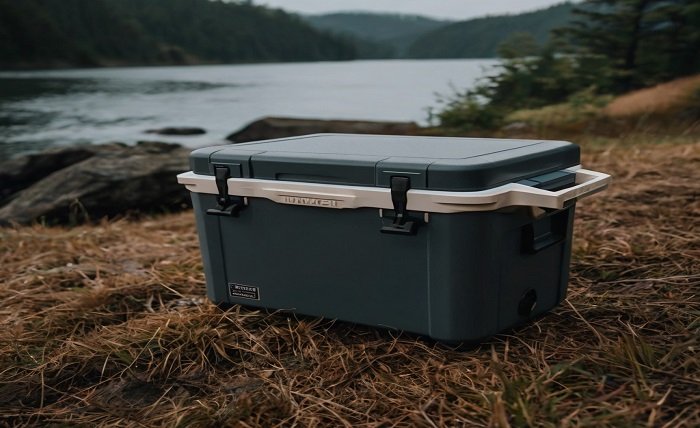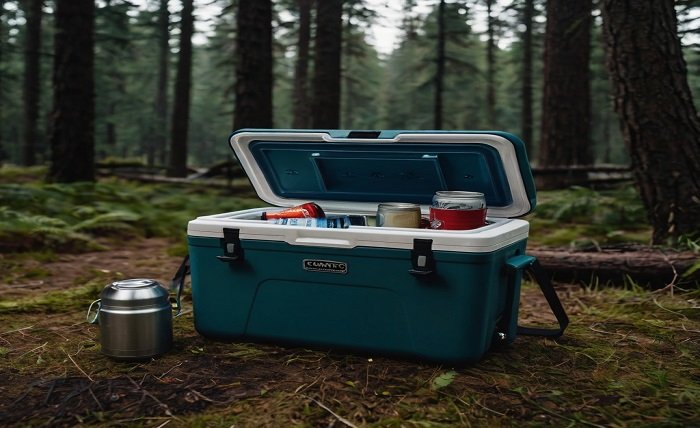Camping is a popular activity among outdoor enthusiasts. A dependable camping cooler is an important tool you can’t skip, whether you’re going on a quick weekend trip or a longer expedition in nature. Maintaining the freshness of your food and drinks while camping is essential to a pleasant outdoor experience. We’ll cover all you need to know about camping coolers in this guide, including how to get the most out of them and the various available models.
Read more about: yeti cooler
Recognizing the Value of a Camping Cooler

When it comes to camping, a camping cooler is more than just a convenience; it’s a necessity. Food can expire fast without a useful camping cooler, especially in hot weather. This can result in waste and even health risks. You can enjoy a wide variety of meals even while you’re far from home thanks to a comfortable camping cooler, which helps keep your perishables fresh. Food spoilage won’t end your trip, whether you’re camping in a tent, RV, or lodge, thanks to a camping cooler.
Types of Camping Coolers: Which One Is Right for You?
There are numerous varieties of camping coolers available on the market, each intended to satisfy a distinct purpose. The most typical kinds consist of:
Hard-Sided Coolers: Distinguished by their exceptional insulation and longevity, these camping coolers are the classics. They are perfect for longer trips and need to keep food cold for longer periods.
Soft-Sided Coolers: These camping coolers are ideal for day hikes and shorter excursions because they are lightweight and portable. They are easier to carry, even though they might not provide as much insulation as hard-sided coolers.
Electric Coolers: These might be an excellent choice for campers with access to electricity. These coolers are ideal for RV camping because, as long as they are plugged in, they can maintain food’s coldness indefinitely.
Backpack Coolers: A backpack camping cooler can be your best option if you plan to hike to your campground. These coolers combine the cooling power of a conventional cooler with the portability of a backpack.
Before making a decision, it’s important to weigh the advantages and disadvantages of each type of camping cooler.
Key Features to Look for in a Camping Cooler
When buying a camping cooler, there are a few qualities you should look for to ensure you get the best one for your needs. Among these characteristics are:
Insulation: The amount of time a camping cooler can keep your belongings cold is strongly correlated with the quality of its insulation. Seek out refrigerators with robust walls and premium-grade insulation.
Size and Capacity: Take into account the amount of food and liquids you’ll need to keep. There are a variety of sizes available for camping coolers, so pick one that will suit your needs without being too heavy to carry.
Durability: An outdoor cooler for camping needs to be strong enough to endure rough treatment. Choose models constructed from sturdy materials that will not break easily from handling rough treatment, exposure to the sun, or possible wildlife interactions.
Portability: This may or may not be an important consideration, depending on your way of camping. While hard-sided coolers frequently have wheels or handles to help with mobility, soft-sided coolers, and backpack coolers are more convenient to carry.
Drainage System: A good camping cooler should have an effective drainage system to remove melted ice without toppling. This feature comes in very handy for lengthy travel.
How to Maximize the Efficiency of Your Camping Cooler
You must use your camping cooler properly to maximize its use. To make sure your food and beverages stay cold for as long as possible, follow these tips:
Pre-chill the cooler: Give your camping cooler a few hours of pre-chilling time by stocking it with ice packs or frozen bottles. By doing this, you can lessen the cooler’s interior temperature and prevent your food from warming up right away once you store it.
Pack Wisely: Begin by assembling your camping cooler with the items you’ll need most frequently. To avoid cross-contamination, combine similar products in groups and store raw and cooked food in different compartments or bags.
Use Block Ice: It’s a beneficial idea to use block ice in your camping cooler because it melts more slowly than ice cubes. Another option is to use frozen water bottles, which, when they melt, can be used as drinking water and ice packs.
Minimise Opening: Warm air enters and cold air exits your camping cooler each time you open it. To maintain the inside temperature, try to limit how often you open the cooler and keep it as closed as possible.
Keep It in the Shade: By shielding your camping cooler from the sun’s heat, you can prolong the life of your ice and keep your belongings colder for longer.
The Best Camping Cooler Brands on the Market
Selecting a camping cooler can be made easier by several reputable businesses that manufacture high-quality goods regularly. Some of the top brands include:
YETI: Serious campers love YETI camping coolers because of their outstanding insulation and tough build. They are designed to endure harsh environments and keep your belongings chilled for several days.
Igloo: Igloo has a large selection of camping coolers, ranging from low-cost versions to expensive models with cutting-edge features. They are renowned for being robust and adaptable.
Coleman: A reputable brand in outdoor equipment, Coleman camping coolers are dependable and cost-effective. They come in a range of shapes and sizes to accommodate various camping requirements.
RTIC: While they are more reasonably priced, RTIC camping coolers are sometimes compared to YETI in terms of performance. They are renowned for having outstanding durability and insulation.
Pelican: With their robust design and exceptional ice retention, Pelican coolers are constructed like tanks. Long-term camping trips or other scenarios where durability is crucial are ideal for these.
Budget-Friendly Camping Coolers: Top Picks
Several reasonably priced camping coolers still provide excellent performance; not everyone needs an expensive camping cooler. The top reasonably priced camping coolers are listed below:
Coleman Xtreme: At a fraction of the cost of high-end coolers, this cooler provides exceptional durability and ice retention. It’s an excellent option for campers on a tight budget.
Igloo MaxCold: The Igloo MaxCold series is a cost-effective and adaptable choice for campers, offering good insulation and a range of sizes.
Lifetime High-Performance Cooler: This cooler is reasonably priced and has excellent ice retention and durability. For anybody looking for a high-quality camping cooler without going over budget, this is a fantastic choice.
Ozark Trail Coolers: These reasonably priced, passably functional coolers are sold at Walmart. They are a well-liked option for recreational campers.
How to Keep Your Camping Cooler Clean and Intact
To make sure your camping cooler lasts for many years, proper maintenance is necessary. Here are some pointers for maintaining and cleaning your camping cooler:
Clean After Every Use: After each outing, give your camping” cooler a thorough cleaning with warm water and mild soap. Take extra care to get rid of any smells or food residue.
Dry totally: To avoid the spread of mold and mildew, make sure your camping” cooler is completely dry before storing it. For a few hours, keep the lid open to let any residual moisture escape.
Keep Your Camping Cooler Out of Direct Sunlight: In a cool, dry location, keep your camping” cooler out of direct sunlight. It should not be kept in moist environments because this promotes mold and mildew formation.
Check for Damage: Keep an eye out for signs of damage on your camping” cooler, such as cracked or broken handles. To prevent further harm, deal with any issues as soon as possible.
Employ a Cooler Liner: To keep the interior of your camping” cooler free of smells and stains, think about utilizing a cooler liner. Maintenance is made simpler by how simple it is to clean and remove these liners.
In summary
An essential piece of gear for any outdoor journey is a camping” cooler. Regardless of your level of camping experience, selecting the appropriate cooler can have a big impact on how enjoyable your vacation is. When camping, knowing what to look for in a cooler, how to use one, and which ones to buy will keep your food and drinks fresh. You can enjoy the wonderful outdoors without worrying about your provisions going stale if you have the correct camping” cooler.
Read more about: technewztop
FAQ
How long can food be kept cold in a camping” cooler? Depending on the type of cooler, the quantity of ice used, and how frequently the cooler is opened, food can be kept cold in a well-insulated camping” cooler for up to five to seven days.
Can I use a camping” cooler with dry ice? Using dry ice, it is possible to keep objects frozen in a camping” cooler. However, because dry ice can leak carbon dioxide gas, handle it carefully and make sure there is enough ventilation.
What distinguishes a hard-sided camping” cooler from a soft-sided one? Hard-sided coolers provide superior insulation and durability, making them appropriate for longer camping excursions, while soft-sided coolers are lightweight and portable, perfect for quick outings.
How can I keep animals away from my camping” cooler? To store food inside your camping” cooler, use odor-proof bags, keep it in a secure place, and avoid leaving food residue outside to deter animals from being drawn to it.
Does my camping”cooler need to be pre-chilled before use? Yes, you can keep your food and beverages colder for longer by pre-chilling your camping” cooler to maintain a lower interior temperature.

